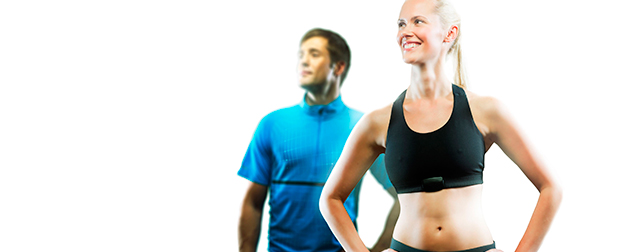Mikko Malmivaara is Product and Marketing Manager for the Finish textile and sensor integrator Clothing+. In the following interview, he explains what his company does and how he sees the future of sensors.
As a pioneer in the field of textile sensor systems, Clothing+ has already joined forces with many of the market’s key players. Can you name a few of your partners?
We are pleased to work with every major company in the heart rate monitoring business including Suunto®, Garmin®, adidas®, Sigma Sport® and Polar®. Heart rate sensing technology developed with our partners over a number of years is now ready for integration into sports underwear. Twelve months ago, working with Danish experts, we demonstrated this evolution in technical sports underwear, PureLime®. This natural and logical progression to incorporate sensors in garments will be marketed with major sports underwear brands in 2012 and 2013. In addition, our medical business unit works closely with some of the giants of the healthcare and medical world, with Philips® in the forefront.
Which parameters, besides heart rate, can be measured with the sensor technology you offer? Can you outline some typical uses for your sensors? What markets are you mainly targeting?
Our mission is to develop and manufacture comfortable textile-integrated sensor electronics; in other words, our position in the value chain is that of an integrator of textiles and sensors. We don’t develop the sensors or algorithms but, for each product, we source the best sensors and integrate them in a comfortable and wearable form.
Although measuring heart rate (ECG) is our main focus at the present time, we also have the technology and know-how to integrate sensors for almost any kind of bodily measurement such as EEG, EMG, GSR, stretch, posture, acceleration, speed, temperature and sound, etc.
We have divided our business into two separate units – sports and medical. Whilst the sports BU (business unit) concentrates on sport, exercise and fitness, the medical BU has a broader spectrum of applications ranging from hospital equipment to homecare both of which utilize instant, disposable sensor equipment and long-term monitoring for telemedicine, etc.
As a B2B service provider you deliver technology tailored to the customer’s needs. What kind of services does Clothing+ exactly offer?
Our business model consists of two key services. On the one hand we offer product development in the form of pilot projects – basically a pre-production run in preparation for the actual production run, and on the other hand, we offer the actual mass production service for demanding textile integrated sensor products.
Our own textile sensor-dedicated production plant in China is equipped with the latest machinery, including laser-cutting, ultra sonic welding, special connector assembly and machine vision inspection. Clothing+ employs some 300 workers at the factory.
In essence, we are the gateway to mass production for textile-integrated sensor products.
How do you see the future for the sensor market? Who will be using sensors in the future?
Sensors are already finding their way into most everyday objects. The fact that we can now integrate sensors into textiles opens up a brand new avenue via information that was previously vague, inaccurate or even unavailable. This has all the makings of big business!
The three basic functions of a garment, namely to cover the naked body, to protect the body from the elements and to portray the wearer’s identity, were further enhanced with the addition of pockets. The idea of attaching a pouch to garments suddenly gave the wearer the option to store small valuable items on his/her person, leaving the hands free. We believe that adding sensors to garments is an unobtrusive way of collecting all manner of contextual information about the wearer. We look upon this as justifiably the fifth basic function of a garment.
What is your favorite Wearable Technologies product apart from the Clothing+ sensors?
My favourite product is the adidas® miCoach adizero f50. Function and service are so well integrated and the outcome is, in essence, a social media game. It’s a great way to make exercise interesting and fun!












